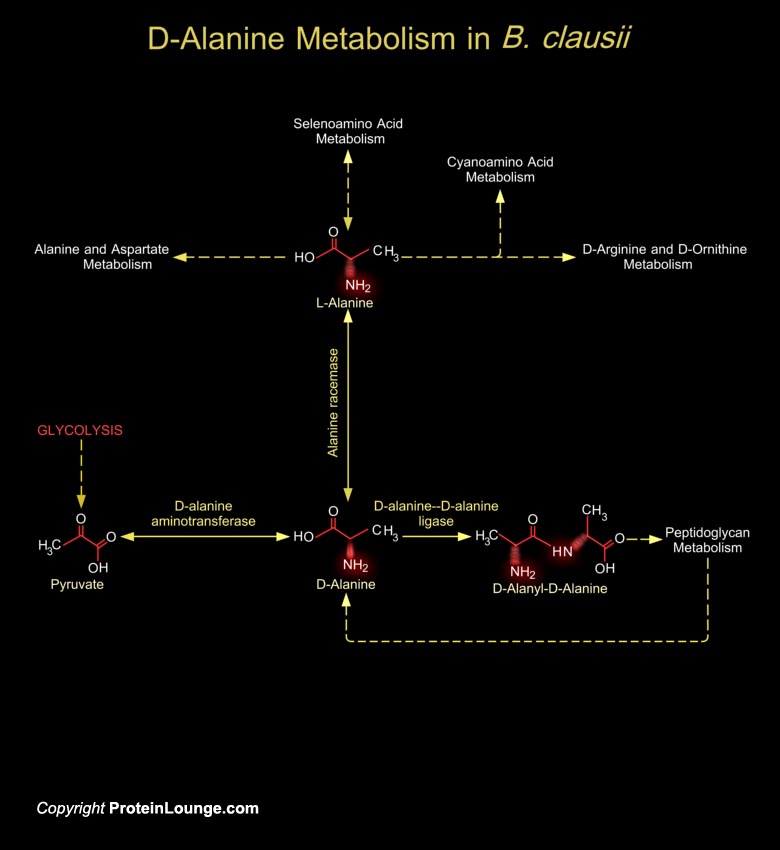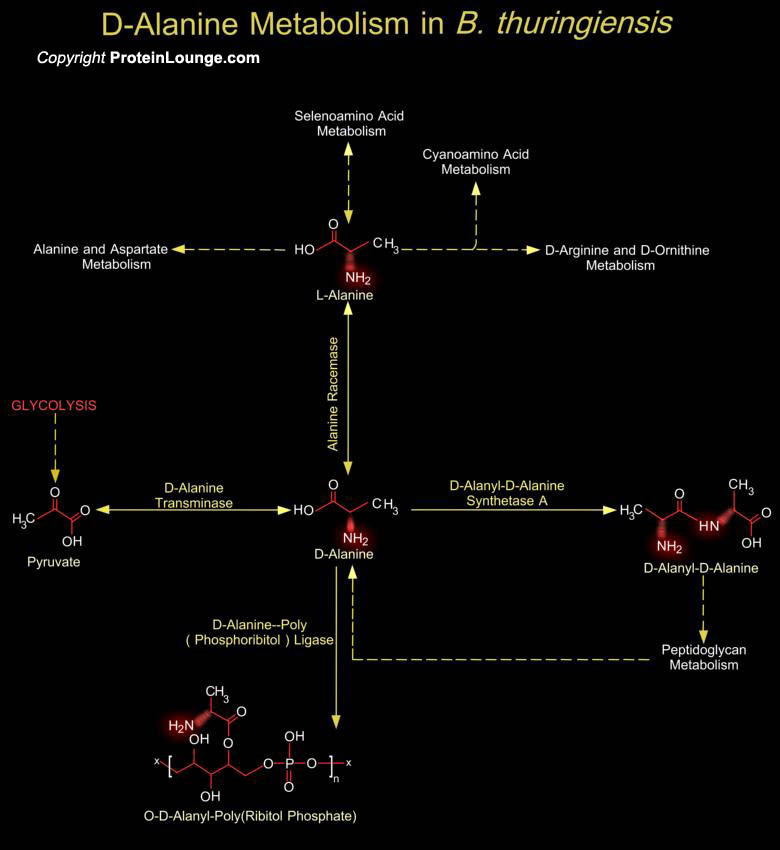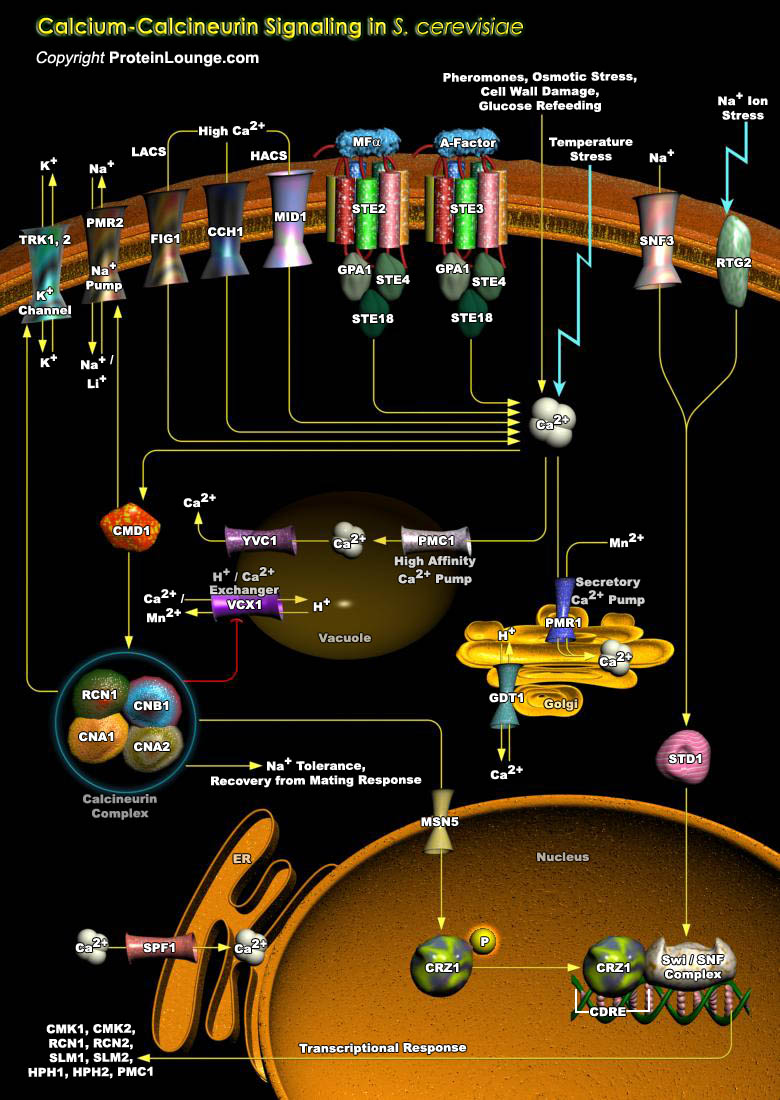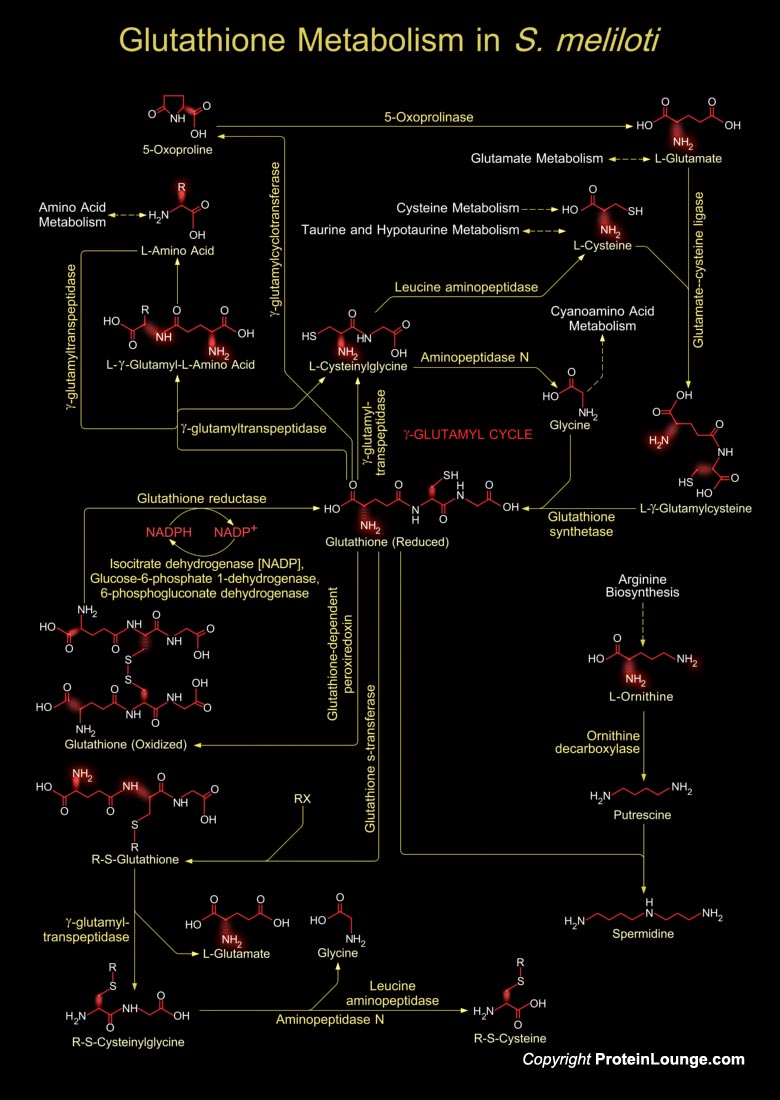Featured Pathways

The spore-bearing alkaliphilic Bacillus species constitute a large, heterogeneous group of microorganisms which are now being investigated in order to better understand the physiology, biochemistry, and especially molecular genetics underlying the behavior of alkaliphilic bacteria. As alkaliphilic Bacillus strains produce enzymes, such as xylanases, cellulases, amylases, and[..]

Bacillus licheniformis(B. licheniformis) is a Gram-positive, spore-forming soil bacterium that is used in the biotechnology industry to manufacture enzymes, antibiotics, biochemicals and consumer products. This species is closely related to B. subtilis, and produces an assortment of extracellular enzymes that may contribute to nutrient cycling in nature. Unlike most other[..]

Bacillus licheniformis(B. licheniformis) is a Gram-positive, spore-forming soil bacterium that is used in the biotechnology industry to manufacture enzymes, antibiotics, biochemicals and consumer products. B. licheniformis, B. subtilis, and B. pumilus comprise the subtilis group, which has been associated with a range of clinical conditions, food spoilage[..]


Bacilli are an extremely diverse group of bacteria that include both the causative agent of anthrax (Bacillus anthracis) as well as several species that synthesize important antibiotics. Bacilli are rod-shaped, Gram-positive, sporulating, aerobes or facultative anaerobes. Bacilli exhibit an array of physiologic abilities that allow them to live in a wide range of habitats, including many[..]

Agrobacterium tumefaciens is a Gram-negative, non-sporing, motile, rod-shaped bacterium, closely related to Rhizobium which forms nitrogen-fixing nodules on clover and other leguminous plants. A. tumefaciens causes crown gall disease of a wide range of dicotyledonous plants, especially members of the rose family such as apple, pear, peach, cherry, almond, raspberry and roses. Basically, the[..]

Azoarcus sp. is associated with microbial degradation of aromatic and other refractory compounds, including hydrocarbons in anoxic waters and soils. Strain EbN1 is an aromatic-degrading bacteria found in freshwater and soil habitats. A unique property of strain EbN1 is its capacity to degrade toluene and ethylbenzene via two different, strictly anaerobic pathways. The absence of nitrogen[..]

Bacillus cereus is a gram-positive, facultative anaerobic rod-shaped endospore-forming bacterium. B. cereus occurs ubiquitously in soil and in many raw and processed foods such as rice, milk and dairy products, spices, and vegetables. Many strains of B. cereus are able to produce toxins and cause distinct types of food poisoning. B. cereus is an[..]

Bacillus cereus is a gram-positive, facultative anaerobic rod-shaped endospore-forming bacterium. B. cereus occurs ubiquitously in soil and in many raw and processed foods such as rice, milk and dairy products, spices, and vegetables. Many strains of B. cereus are able to produce toxins and cause distinct types of food poisoning. B. cereus is an[..]

In the yeast S. cerevisiae (Saccharomyces cerevisiae) various stimuli and developmental cues excite calcium (Ca2+) signals, which initiate appropriate downstream responses by changing the conformation of Ca2+ binding proteins. This is usually characterized by a sharp rise in cytosolic free Ca2+ followed by an exponential decrease. The cytosolic calcium homeostasis is maintained and[..]

Ca2+ (Calcium) plays a major role in life and death within T-Cells. Elevation of intracellular free Ca2+ is one of the key triggering signals for T-Cell activation by antigen. The binding of antigen, MHC Class-II (Major Histocompatibility Complex Class-II), to the TCR-CD3 (T-Cell Antigen Receptor)-CD3 (CD3 Antigen) triggers the recruitment of a series of tyrosine kinases and substrates to the[..]

Commonly referred to as slime mold, Dictyostelium discoideum is a species of soil-dwelling amoeba belonging to the phylum Amoebozoa, It is a eukaryote that transitions from a collection of unicellular amoebae into a multicellular slug and then into a fruiting body within its lifetime. Bacteria are attracted to nutrients and repelled from toxic chemicals for their survival.[..]




















